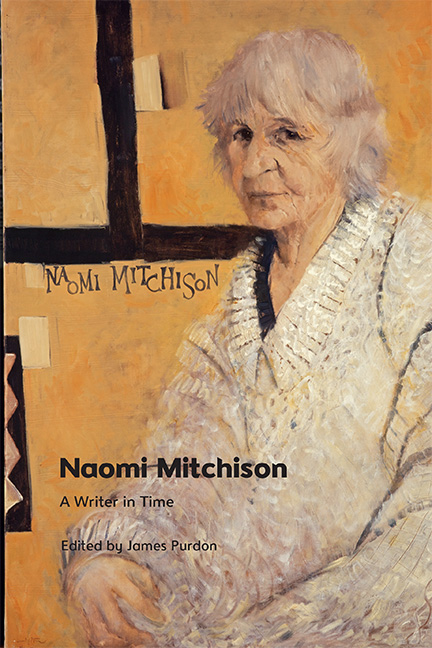Book contents
- Frontmatter
- Contents
- Acknowledgements
- Notes on Contributors
- Introduction
- 1 Naomi Mitchison’s Interwar Short Stories
- 2 ‘She had her hand on the plow’: Shame, Uncertainty and Transformation in The Corn King and the Spring Queen
- 3 Varieties of Sexual Experience: Naomi Mitchison, Mysticism and Gerald Heard
- 4 Scientific Temporalities in We Have Been Warned and ‘Beyond This Limit’
- 5 Send in the Clones? Naomi Mitchison and the Politics of Reproduction and Motherhood
- 6 From Argyll with Love: Naomi Mitchison and the Soviet Union
- 7 Fire or Blood? Aestheticising Resistance in Naomi Mitchison’s The Blood of the Martyrs
- 8 ‘The summoning urgent thing’: The Bull Calves and the Drive to Experiment at Mid-Century
- 9 Mitchison, Decolonisation and African Modernity
- Naomi Mitchison’s ‘Europe’
- Europe
- Bibliography
- Index
4 - Scientific Temporalities in We Have Been Warned and ‘Beyond This Limit’
Published online by Cambridge University Press: 18 November 2023
- Frontmatter
- Contents
- Acknowledgements
- Notes on Contributors
- Introduction
- 1 Naomi Mitchison’s Interwar Short Stories
- 2 ‘She had her hand on the plow’: Shame, Uncertainty and Transformation in The Corn King and the Spring Queen
- 3 Varieties of Sexual Experience: Naomi Mitchison, Mysticism and Gerald Heard
- 4 Scientific Temporalities in We Have Been Warned and ‘Beyond This Limit’
- 5 Send in the Clones? Naomi Mitchison and the Politics of Reproduction and Motherhood
- 6 From Argyll with Love: Naomi Mitchison and the Soviet Union
- 7 Fire or Blood? Aestheticising Resistance in Naomi Mitchison’s The Blood of the Martyrs
- 8 ‘The summoning urgent thing’: The Bull Calves and the Drive to Experiment at Mid-Century
- 9 Mitchison, Decolonisation and African Modernity
- Naomi Mitchison’s ‘Europe’
- Europe
- Bibliography
- Index
Summary
‘All my life,’ Naomi Mitchison writes in an article of 1987, ‘I have been on the edges of science.’ She describes playing as a child with blobs of mercury in the laboratory of her father, the Oxford physiologist J. S. Haldane, and receiving presents of Danish dolls’ house furniture from the physicist Niels Bohr. As young adults, she and her brother (the biologist J. B. S. Haldane) conducted genetics experiments on guinea pigs, and later jointly published ‘a paper on color inheritance in rats’. In her article, Mitchison considers the question of why she did not pursue a scientific career:
I suppose it was because I always thought of guinea pigs not as figures in a genetics problem but as people. So I began to write, and I seem to be still writing. But when I began on science fiction, I was no stranger in the other world.
Mitchison’s early refusal to consign her scientific researches to a purely rationalist realm – her incorporation of science into a whimsical world of play – leads her, in her fiction, to explore the emotional and imaginative significance of science. Though Mitchison’s point here is that her scientific background enriched her post-war science fiction, science also has an explicit presence in her earlier novel We Have Been Warned (1935) and in her shorter work ‘Beyond This Limit’ (1935). In these texts, Mitchison incorporates interwar science – its debates, its technological productions and its popularisation – into the idiosyncratic imaginative lives of her women characters.
This chapter demonstrates that science (especially relativity, mathematics and radio science) is crucial to Mitchison’s attempt, in We Have Been Warned, to envision a future which, though based on rationalist socialist principles, takes into account the emotional and imaginative experience of women. The incongruities of We Have Been Warned, particularly its mixture of social realism and whimsical fantasy, have prompted much negative criticism, both at the time of the novel’s publication and since. Elizabeth Maslen, for instance, writes that Mitchison ‘seems to have lost her sense of artistic decorum which limits what modes of expression can sit comfortably with each other’.
- Type
- Chapter
- Information
- Naomi MitchisonA Writer in Time, pp. 58 - 72Publisher: Edinburgh University PressPrint publication year: 2023

